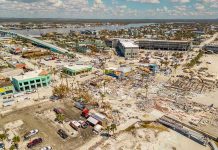
Federal intervention in Washington DC policing has sparked a stunning drop in crime rates, igniting fierce debate over constitutional limits and the future of local control.
Story Snapshot
- DC crime rates plunged after President Trump deployed the National Guard and federal law enforcement.
- The crackdown overrode DC’s Home Rule Act, raising concerns about federal overreach and constitutional boundaries.
- Official data confirm sharp declines in homicides, assaults, robberies, and carjackings in August 2025.
- Political polarization and public protests persist, with critics warning of risks to civil liberties and local autonomy.
Federal Action Reshapes DC Crime Landscape
President Trump authorized an unprecedented federal intervention in Washington DC’s policing, deploying National Guard troops and federal agencies to restore order. This move was justified by persistently high crime rates and a violent summer spike, positioning the administration’s decisive action against prior local failures. By temporarily overriding DC’s Home Rule Act, federal authorities assumed direct control, a decision that immediately altered the city’s law enforcement landscape and triggered nationwide attention from both supporters and critics.
Crime statistics from the DC Metropolitan Police Department reveal dramatic improvements following the intervention. As of August 25, homicides fell 15%, sex abuse dropped 48%, assaults decreased 19%, and robberies sank 31% compared to 2024 figures. Carjackings hit their lowest numbers since May 2020, plunging 87% from July 2023, and no murders were reported since August 13. These quantifiable gains have been celebrated by federal officials, who cite restored public safety and renewed confidence among many residents navigating what had been one of the nation’s most dangerous urban environments.
Debate Over Constitutional Authority and Local Autonomy
The federal override of DC’s policing triggered fierce debate about constitutional prerogatives, the integrity of local governance, and the role of federal power in America’s cities. While the Home Rule Act of 1973 is designed to ensure DC’s autonomy, it allows for temporary federal intervention under exceptional circumstances. Trump supporters hail the crackdown as a victory for law and order and a rebuke to failed progressive policies, emphasizing the urgent need to protect families and restore traditional values. By contrast, local officials and activists argue that the intervention undermines civil liberties and sets a troubling precedent for federal overreach, sparking ongoing protests and public demonstrations across the city.
Political polarization has intensified, with the White House and DOJ touting the success of the crackdown while critics question the sustainability and long-term impact of militarized policing. The intervention’s immediate effects on crime rates are clear, but divergent perspectives persist regarding broader implications for community trust, racial justice, and the balance between federal and local authority. Some criminologists caution that short-term drops may not guarantee lasting change, noting that aggressive enforcement could strain police-community relations and erode constitutional safeguards.
Long-Term Implications and Unresolved Questions
As federal control continues, Washington, D.C., faces a complex future shaped by the legacy of this historic intervention. The short-term safety gains have brought relief to residents, possibly boosting tourism and business confidence if trends hold. However, the erosion of local autonomy and the lasting effects on community trust remain unresolved. Policy experts warn that the precedent set by federal policing may embolden future government overreach, threatening the principles of limited government and individual liberty that define American conservatism.
Crime Plunges In Washington DC After Trump Launches Historic Crackdown | ZeroHedge https://t.co/66qTDfpG7B
— Busy 4 the Lord (@Busy4theLord) August 25, 2025
Stakeholders across the spectrum agree that ongoing scrutiny is essential. While official data confirm the dramatic decline in crime, questions about data transparency, long-term sustainability, and the broader social impact continue to fuel debate. DC’s experience serves as a case study in the tension between federal power and local governance, underscoring the need for vigilant defense of constitutional rights and conservative values. As the city adapts to new realities, Americans must remain alert to any policies that threaten the bedrock principles of self-government, family security, and individual freedom.
Sources:
Assessing DC’s Violent Crime Trends | Jeff Asher
Fact: Yes, D.C. Crime Is Out of Control | White House
Crime in Washington DC: What You Need to Know | Council on Criminal Justice
DC Metropolitan Police Department Daily Crime Report
Violent Crime in DC Hits 30-Year Low | DOJ



